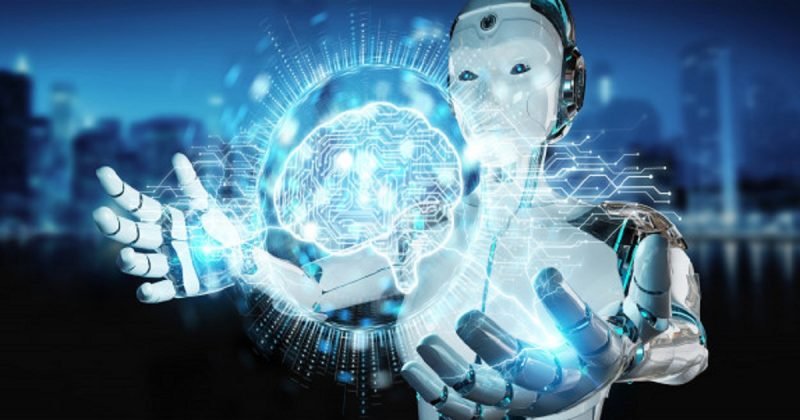Evolution or Eradication? The Dawning of the Neuralink Age

On 28 August 2020, Elon Musk’s company Neuralink divulged prototype devices along with test subjects who had these devices inserted into their brains. The belief behind these endeavors is based on the perception that humans are confronted by an “existential threat” in the form of artificial intelligence which can be mitigated by merging with the aforementioned threat. To that end, Neuralink, Elon Musk’s company has constructed a self-contained neural implant which can be used to transmit comprehensive brain activity remotely. The implant can be controlled via a computer or mobile devices referred to as the tertiary layer of cognition through the neuralink connected by Bluetooth low energy antenna to an app. The battery of the implant is to be charged wirelessly through a compact inductive charger.
Furthermore, micron-scale threads are implanted into regions of the mind that command movement. These threads are connected to a chip which is further linked to a small computer behind the ear called the Link which houses software as well as the battery. The flexible threads themselves are composed of multiple electrodes for neural signal detection which are incorporated into the implant for processing and stimulation. Neuralink aims to insert four of sensors with three in motor regions and one in a somatosensor region.

Another tremendously vital component has been the neurosurgery requirements of the procedure to insert the neuralink without general anesthesia for the activity of the brain to be observed by an exterior receiver. The threads linking the implant with the brain are so fine that a robotic system is required for extremely high levels for precision so as to prevent damaging the nerves as well as the arteries and avoid inflammatory responses.
Additionally, the thickness of the neuralink device is 8mm which when compared to the thickness of the skull which is approximately 10mm increases the appeal of the device which is rendered invisible. Upgradation capability as well as the revertability of the device instalment, demonstrated by Musk during the Neuralink Progress Update seems to be a priority for the company. These capabilities will come in handy for neuralink’s potential end goals which are curing hearing impairment, neurological disorders, Alzheimer’s, dementia, blindness, paralysis, extreme pains, seizures, addiction, detect strokes, and brain damage. Neuralink can be used to monitor health and prediction of body movement. However, the versatility of the device will be displayed in its ability to play music, supporting the awareness and interpretation of sound, saving as well as in the replaying of memories. The is also the possibility of real time information flows which can allow people to boost their own activities through a procedure termed neurofeedback.
Still, Neuralink is part of brain-machine interfaces (BMIs)/ brain-computer interfaces (BCIs) dating back to the 1970s were the early adaptations enabled people to move simulated cursors. Whereas more recent versions have advanced enough to allow people to completely control robotic arms. BCIs can also be likewise surgically installed (invasive) and non-invasively such as glued. BCIs function in three majors phases which involve signal procurement, decoding and an exterior device applicability.
However, Utah Array produced by International Business Machines Corporation (IBM) is only the Food and Drug Administration (FDA) approved BCI which is undergoing clinical trials in the US and thus can emerge as a competitor to neuralink with its first-mover advantage, have being the proof of concept as well as a two-decades-long head start. Government-backed program in the US includes the Defense Advanced Research Projects Agency (DARPA) supported Synchron and Paradromics which is utilizing the Neural Engineering System Design program, a Department of Defense-funded research initiative. DARPA achieved a considerable milestone when an experimental brain-computer interface combined with a surgical microchip enabled a paralyzed individual to circumnavigate simulated aircraft. Moreover, the Pentagon is focused on and is financing techniques such as the utilization of light for data collection rather than inserted electrodes.
Other competitors are Kernel, BrainGate, Neurable which is using brain perceiving devices for Virtual Reality and Augmented Reality experiences, Facebook’s $1billion acquisition Ctrl-Labs, Canadian InteraXon, Belgian Imec with Neuropixels technology, Medtronic PLC which is establishing a research and development centre in Hyderabad and NeuroPace. All these companies are striving to manipulate innovations in technology such as material and signalling advancements to improve their BCIs.

In Russia, the Neurorobotics and Moscow Institute of Physics and Technology (MIPT) has created a BCI algorithm to make use of simulated neural systems and electroencephalography image representations in the brain on to a computer monitor instantaneously through non-invasive electrodes. The Chinese have likewise been working on their own BCI called the Brain Talker specifically intended for deciphering brainwave data which helps in increasing the speed of communication between the device and the brain. Uses of the Brain Talker are said to include medical care, education, everyday usage and gaming.
Another Chinese funded start-up in this arena is BrainCo founded by Han Bicheng. Bicheng is a Harvard educated engineer who have developed a variety of biomedical devices such as the needle-free insulin syringe, wearable defibrillator, and electrocardiograph. His company has been headquartered in Massachusetts and has offices in China. The company, using advance sensors as well as intricate machine learning algorithms has been able to exploit brain signals to improve cognitive abilities and acquire remote ability to control robotic movement through mental capacity alone. Yet, the Chinese response to the nerualink demonstration has been slightly scathing with the Global Times quoting experts referring to the demonstration as a “job fair” while expressing concerns regarding the “decoding of the neural signals”.
Musk on the other hand has been apprehensive regarding the paradigm shift which nerualink signals for the democratization of intelligence which might otherwise be owned by governments or private corporations. Furthermore, Neuralink has however been approved by the FDA as a breakthrough device with multiple implants per organism capability. Neuralink’s N1, 4mm-square chip, can connect with a thousand distinct brain cells with the possibility of 10 N1 chips to be implanted on a single person.
Besides, Musk has demonstrated real-time signal transmission from an animal connected to neuralink which was monitored both visually and audibly from a computer screen. Moreover, Musk pointed out that electric field can be utilised to influence a single electrode influence which can control 1,000 or 10,000 neurons showcasing the possibility of influencing millions of neurons with multiple electrodes. This demonstration was bluntly explained by Musk to be aimed at recruitment to further advance the neuralink technology for which Musk hopes to employ more than a million people in his company alone.
This renewed focus on humanity to be in confluence with artificial intelligence (AI) can be the start of the fifth industrial revolution. One research even described to neuralink’s innovations “order of magnitude leaps” owning to the range as well as the size of the chip, power managing capabilities and the pioneering sewing machine inspired device used to place the device into the cortex.

However, concerns remain regarding the technology of BCI technology which this demonstration can spur on. The penetration of the device is also limited to the cortical surface, the complexity of interpreting neural electrical signals into machine-decipherable data, tissue scarring, the corrosive atmosphere in the brain requires insulating layer comprised of materials tough to work with, security which the company has made a top priority, technological divides emerging, regulatory and ethical concerns abound. The company has been exploring options to avoid the minefield of regulatory processes by conducting human trials in China or Russia which can have significant political and security repercussions.
Nevertheless, Elon Musk has emphasised on the importance of building a symbiotic relation between the AI and human which could otherwise in his estimate be more dangerous than nuclear weapons. More importantly, if humans are to thrive in a super intelligence-driven society, BCIs are critical. Therefore, Musk’s establishment of a link between the human brain and AI through neuralink is the logical option as well as the next step in human evolution.


















